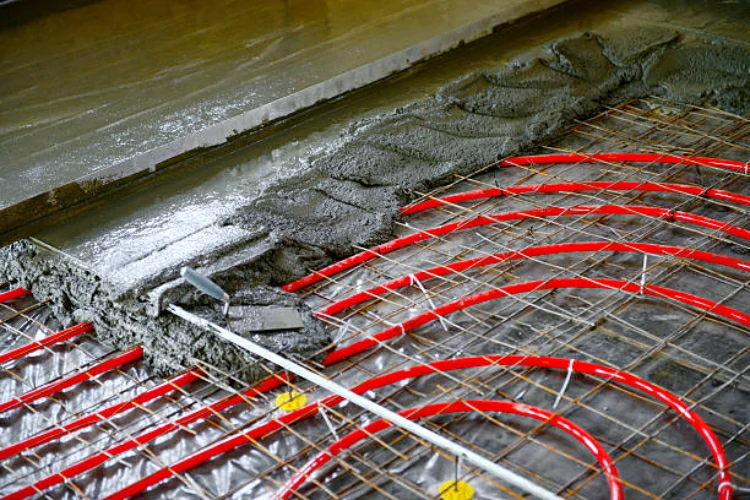Introduction
The PEX pipeline family occupies an important place in modern construction and piping systems, offering a variety of options to meet different needs and environmental conditions. Among them, PEX-A and PEX-B are two common types, each with unique characteristics and application scenarios. In this article, we will take a deeper look at the features, benefits, and considerations for installation and application of these two PEX pipeline types.
There are three types of PEX pipeline
PEX-A – This category is manufactured with peroxide, shows the greatest flexibility and is suitable for water supply lines in residential properties. Polystyrene-alpha pipes expand at freezing temperatures, reducing the risk of cracking.
PEX-B – This type of pipe is manufactured using the wet curing method. Although PEX-B tubes have a unique coil memory that allows them to return to a coiled state, they do not complicate installation. They also have enhanced chlorine resistance and are suitable for use in environments with chlorinated water.
PEX-C – This type is manufactured by irradiation. Polystyrene-gamma pipes are the most economical option, but they are the hardest and prone to kinks and breaks.
Introduction to the PEX pipeline family
What is PEX-A?
High density polyethylene (HDPE) is crosslinked using the Engel method, with peroxides added before the product is formed. This improves bonding at the atomic level and also allows for a higher degree of crosslinking. PEX A is more flexible, making it expandable and suitable for cold expansion fastening.
Resistant to kinks, making the pipe unusable, installed with expansion fittings, the installation of the PEX-A pipe requires an expansion tool. The diameter of the pipe is large, so you need to use a tool to enlarge the pipe and sleeve, and then slide the pipe in. Once you remove the tool, the material will shrink back to its normal size, tightening it around the fitting.
Why use PEX-A?
The PEX-A connection method eliminates the risk of throttling. PEX-A also ADAPTS more easily to confined Spaces. You can connect it to existing pipes while reaching a comfortable location. You have a few seconds before the expansion joint retracts. In cold environments, however, this assembly may take longer to shrink.
What is PEX-B?
A silane process, or steam or moisture cross-linking, is used to form a PEX-B tube once the HDPE is extruded. The product is steam treated. At the same time, the silane catalyst triggers crosslinking. Pex-b is the most common PEX pipeline. It provides the following benefits: The PEX-B tube does not require the use of expansion tools, making installation faster and easier. The connection mode is not affected by hot or cold temperature. Meets the same ASTM standard as PEX-A tubes. Do not attempt to extend the end of the PEX-B pipe, as it is not flexible. The fittings are also smaller, so the diameter is tighter at the joint. This increases flow resistance, which means less water reaches the fixtures. Because the connection method is not ergonomic, bending the pipe onto the sleeve is a risk and can lead to leaks. To avoid this, the crimping tool must be square on the sleeve.
Other considerations
Both types have maximum temperature and pressure ratings. For rupture pressures, it is important to know that the pressure level decreases at higher water temperatures. There is one key consideration when you compare PEX-A and PEX-B; Pipes do freeze when it’s cold. Due to its expansive properties, PEX-A can withstand pressures of up to 500 psi without bursting; PEX-B is harder, so it can’t withstand extreme conditions. Therefore, climate and weather can affect your choices and how to protect your pipes from cold temperatures.
Conclusion
As an important representative of the PEX pipeline family, PEX-A and PEX-B each have superior characteristics and are suitable for different application scenarios. Choosing the right PEX pipe type takes into account several factors such as installation method, environmental conditions and performance requirements. By understanding their characteristics in depth, you can better decide which type is more suitable for a particular engineering project, so as to achieve the best results in the pipeline system.As an important representative of the PEX pipeline family, PEX-A and PEX-B each have superior characteristics and are suitable for different application scenarios. Choosing the right PEX pipe type takes into account several factors such as installation method, environmental conditions and performance requirements. By understanding their characteristics in depth, you can better decide which type is more suitable for a particular engineering project, so as to achieve the best results in the pipeline system.
Contact
IFAN is a Chinese manufacturer of plastic pipes, fittings and valves with 30 years of experience. If you are interested in IFAN copper valves, PPR valves, pipes and fittings, please contact us. IFAN offers you a variety of standard pipes to meet your specific needs. Click below to learn more about IFAN’s wide range of affordable and cost-effective valve products and piping system related products.
We will reply your email or fax within 24 hours.
You can call us at any time if there is any question on our production.
For more information,pls visit our webside https://www.ifanplus.com/
Pls Mailto: [email protected]






